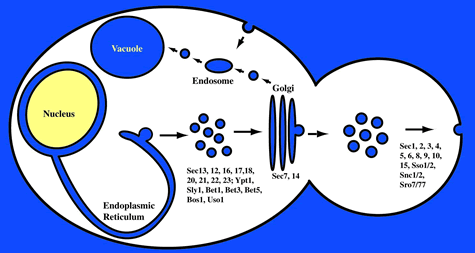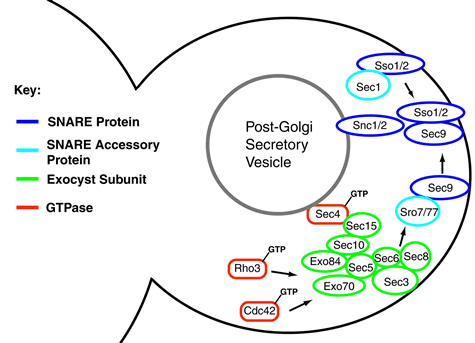Professor
UNC-Chapel Hill
Education and Training
B.A., Carleton College, 1985
Ph.D., University of Illnois, 1990
Postdoc, Yale University, 1990-94
Areas of Interest
Delivery of proteins to the proper place on the cell surface is important for a large number of cell biological processes, including the development of cellular asymmetry and polarity. The delivery of cell surface components is accomplished primarily by the delivery of transport vesicles that fuse with a specific region of the plasma membrane. We have been examining plasma membrane targeting events in the yeast, Saccharomyces cerevisiae, in order to take advantage of the genetic and cell biological tools available in this organism. SNARE proteins are thought to play a central role in the targeting and/or fusion of transport vesicles with the plasma membrane, and we have identified and extensively characterized a set of SNARE proteins which are required for cell surface transport in yeast. Our genetic and biochemical analysis of these proteins has led us to the identification of a new regulatory pathway involving the Rho GTPases Cdc42 and Rho3, as well as a novel Sec9 binding protein, related to the Drosophila tumor suppressor lethal giant larvae. Recent work from our lab suggests that Cdc42 function in exocytosis is restricted to very early in bud emergence while Rho3 appears to function in this regard throughout the cell cycle. This suggests that this pathway may be central to the overall coordination of the polarity of the actin cytoskeleton with the polarity of cell surface delivery. We are testing the model that the Rho-Cdc42/Sro7/Sec9 pathway is conserved in higher eukaryotic cells including polarized epithelial cells and neurons. These studies will have important implications in both understanding the function of Rho GTPases in exocytosis as well as in unraveling a novel mechanism for regulation of t-SNARE function at the plasma membrane. This regulation may represent a key mechanism by which eukaryotic cells regulate and coordinate the polarity of the actin cytoskeleton with the polarized delivery of protein and lipid to the cell surface. Finally studies from other systems suggest that loss of function in this pathway may be tied to the loss of polarity commonly observed during tumorigenesis.


Affiliations
Cell Biology & Physiology Curriculum
Lineberger Comprehensive Cancer Center


